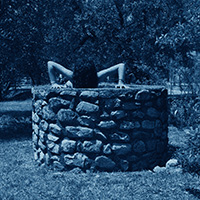Day Two – Into The Black Hills
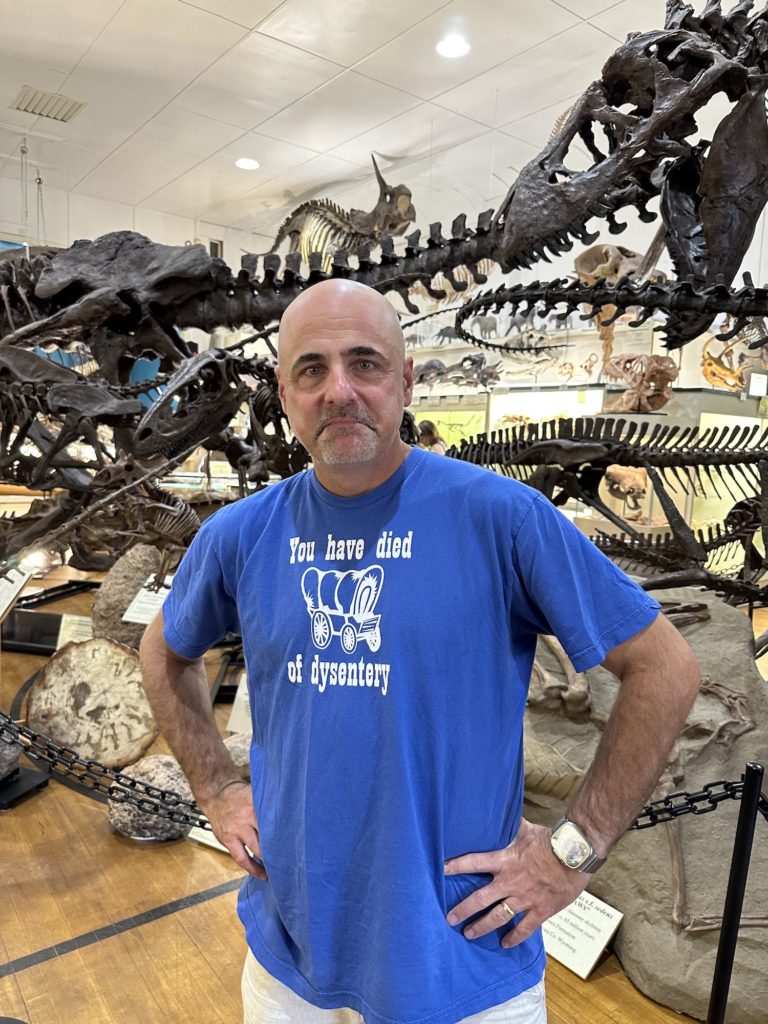
Day two, first morning at a campground. Not the most exciting overnight beyond sweating ourselves to sleep and waking up freezing. We possess the ability to thermally regulate, just not a ton of sense of experience to execute. But that’s the thing: we’re learning bit by bit, muttered curse by muttered curse, unexpected joy by unexpected joy. We’ll be experts in what we know and comfortable in the naïveté of what we don’t by July 4, I’d wager.
Leaving Wyoming we crossed into South Dakota and the towns leading into the Black Hills. I was glad to be back after recently finishing Dan Simmons’ masterful The Black Hills and subsequently having no desire to trot over to Mount Rushmore. Hit Custer on the way to our first real destination in Hill City, the Museum of the Black Hills Institute. Known primarily for its role in the discovery of Sue the T. Rex (now at Chicago’s Field Museum) it’s a small affair with a truly exceptional collection. Two laps of the whole thing and the teens were still enthralled. We’ll see if that lasts through our actual fossil dig in a few days …
For something completely different we visited the Cosmos Mystery Area, a surprisingly fun bunk science sideshow where buildings erected at weird angles on a hillside show “evidence” of cosmological “hot spots” where gravity is wonky. It’s not. The whole experience is your inner ear data fighting with your eyes’ visual data. Of course it knocks you off kilter, but it isn’t a mystery. I’d do it again, though. Always up to humor a carnival barker.
From there we took a short jaunt onto the other planet that’s known Badlands National Park. Just a taste as we were heading to our campground. The Badlands gets our full attention tomorrow — as does Deadwood and finally Devil’s Tower tomorrow night.
A note on KOA Kampgrounds, our second tonight. There’s a massive difference between Journey tier sites (basically camps only as waypoints) and Holiday tier sites (amenity-laden destinations). The ladies prefer the latter. I just need to sleep.
Oh and another campsite observation. KOA sites all have ample bathroom and shower facilities, but I find that the toilets are only used by people who don’t want to lay waste in their $200,000 home-on-wheels. What I’m saying is that campsite-provided indoor plumbing witnesses atrocity.
And goodnight!
Day One – Departure
We were on the road around 8am starting a two-day journey to the Badlands of South Dakota. Could have made it in a day, probably, but I wanted to start easy. We’re hauling a hell of a lot more stuff than my test runs. Upside: the rig is more stable laden with all our crap (and properly inflated trailer tires). Didn’t notice an appreciable range reduction, though I’ve stopped doing thorough calcs now. What will be will be.
Our only real sightseeing today was the Quebec 01 Missile Alert Facility outside of Chugwater, Wyoming. It’s not a missile silo, per se, but it was part of the United States’ Cold War-era nuclear arsenal command and control. (And yet only decommissioned in 2005.) Spartan like a college dormitory and yet outfitted with a pool table, a nice kitchen, an 8-track music deck, and other amenities. Weird to think of young soldiers passing the time there — sinking billiard balls, enjoying some tunes — while the keys to launch ICBM’s that would annihilate 20 million people were in the same facility.
Some small snafus on the journey. We were blocked in while charging by someone who parked and left their vehicle. (This happens at gas stations too, of course.) Through a stroke of sheer luck we found out that the owner of the car was a line chef inside an Olive Garden across the parking lot. So, we ate at Olive Garden while the manager tried to figure out which of his employees drove the blocking car. “Eat at Olive Garden” (blech) was absolutely not on my trip itinerary, certainly not on Father’s Day, but this trip is all about rolling with the punches. Upside: my father loved Olive Garden. The more over-the-top the theming of any commercial establishment (think Rainforest Cafe) the better, for him. So, happy Father’s Day, Dad!
Staying tonight at the first of many different KOA campgrounds (excuse me, kampgrounds). This one is not quite the low-grade MAGA rally the girls were hoping for, though that certainly awaits us. We played a round of 9 holes at a decrepit mini golf facility. Left the dog alone in the trailer for 10 minutes where he ripped into and devoured an entire bag’s worth of hot dog buns. So, yeah, basically everything going as planned.
The real hack for travelers towing RV’s with electric vehicles is hooking into the electrical connections at campground sites meant to power motorhomes but using it to refill your vehicle battery. Technically this isn’t allowed (it’s in the campground fine print), but it absolutely works. Basically Level 2 charging overnight. And if you bring a splitter, as I have, you can continue to power the RV too. This is admittedly the “easy” part of the EV charging odyssey. More on this to come.
We’re winding down and prepping for our visit to the Black Hills Institute tomorrow by watching Dinosaur 13, the story of (and at least one of several contested perspectives concerning) the legal/criminal drama behind the T. Rex fossil known as Sue.
Black Hills-bound shortly after sun-up.
The Ampcamper: An RV Adventure
I’m about to depart for three weeks towing a 30-year-old RV trailer with an electric vehicle up and down the Rocky Mountains and into various national parks, off grid. With me will be my teenage daughter and niece and a fairly large dog. Surely something will go wrong.

I had been digitizing old family media for a few years after my father passed away when I stumbled upon a unique photo — actually a 35mm slide because projected slides were social media in the late 70’s. It depicted a map and had clearly been drawn on. After a little sleuthing I determined it was the route my family took in a motorhome we owned for a few years on a three-week trip which came to be known thereafter as “the three-week trip”.
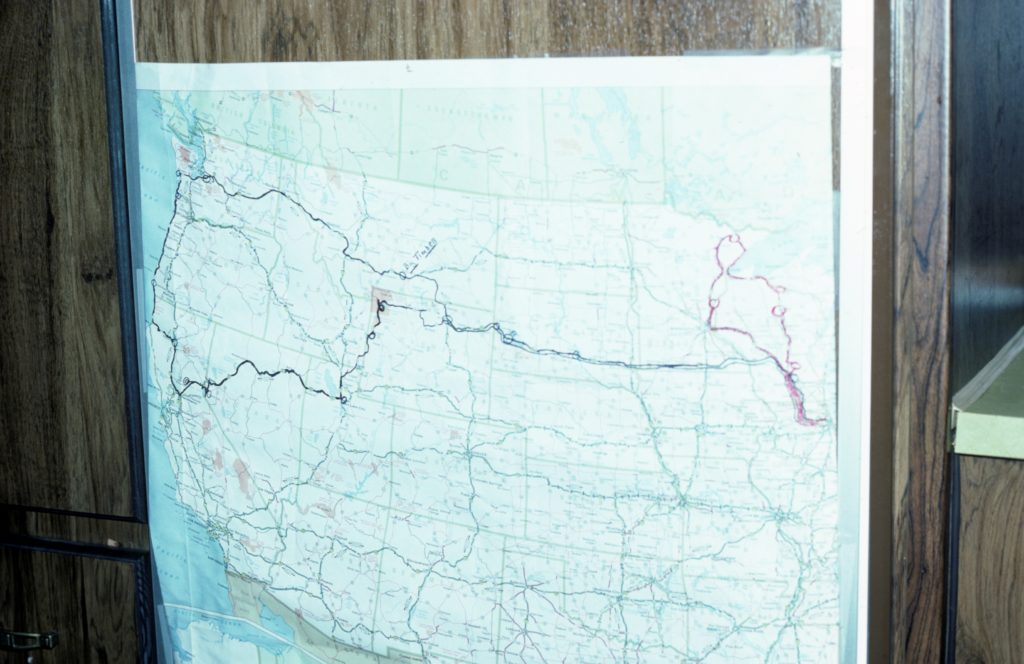
My father loved that motorhome. I think it was as close as he could get to his fantasy of being a cross-country big rig truck driver, role-playing Convoy. I recall very little of the sites or destinations we visited in that thing, but I do remember being inside what seemed a massive vehicle to young me. So on finding the map I knew I had to recreate at least a part of the journey at some point. Well, that point is now.
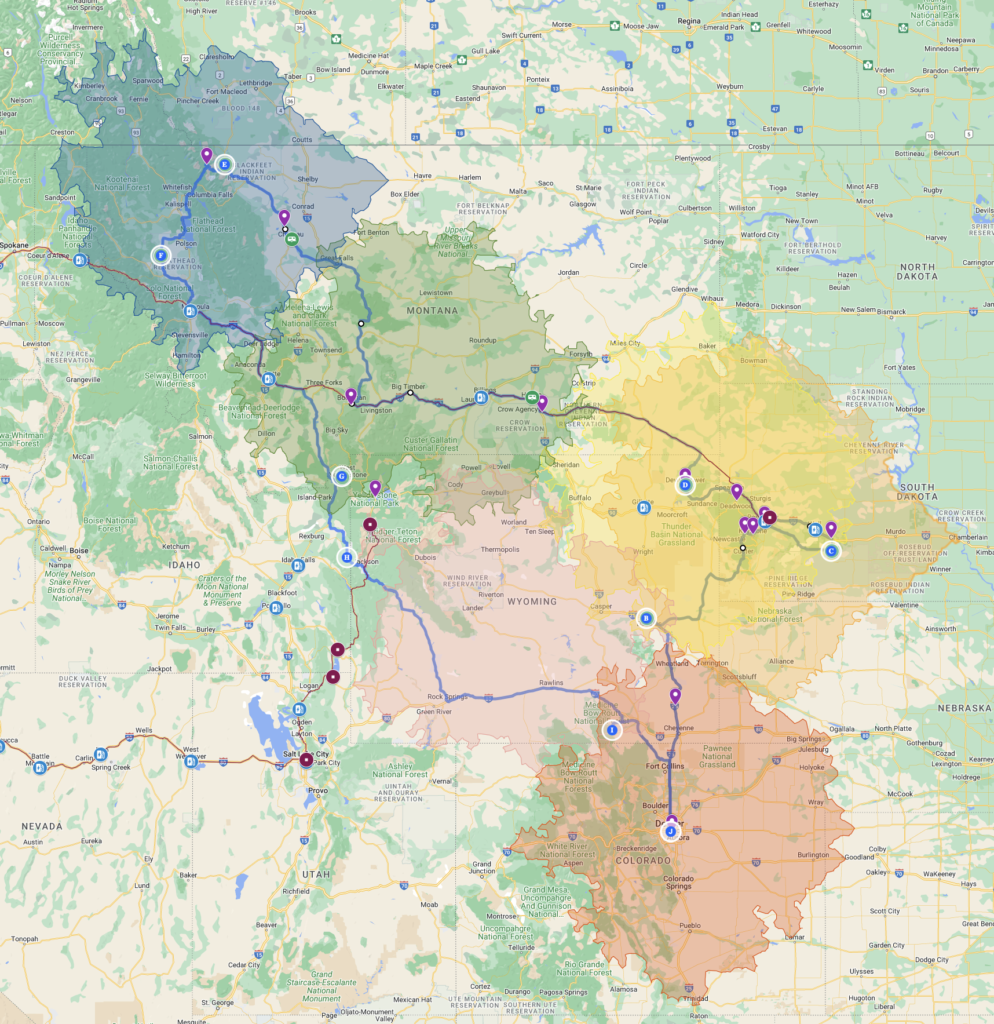
Starting point: Denver. My father’s original route is the thin red line above and we pretty quickly determined that actually recreating the trip (which swung all the way out to the Pacific Northwest and down the west coast) would take up most of the summer. How ol’ dad pulled this off in three weeks — including transiting the northern plans to/from Chicago — I have no idea.
So our upcoming route basically breaks down into thirds: Black Hills/Badlands, Glacier National Park, and Yellowstone. We pick up my dad’s route along I-90 west and then again at Yellowstone. Glacier itself is a bit of a detour (which I want to see for obvious reasons), so we’re not being overly faithful to the original, though we are trying to at least stop at some of the places he’s circled on the map. Why, for instance, Big Timber, Montana? No clue. But we’re gonna find out — or at least make up a reason we think he circled it.
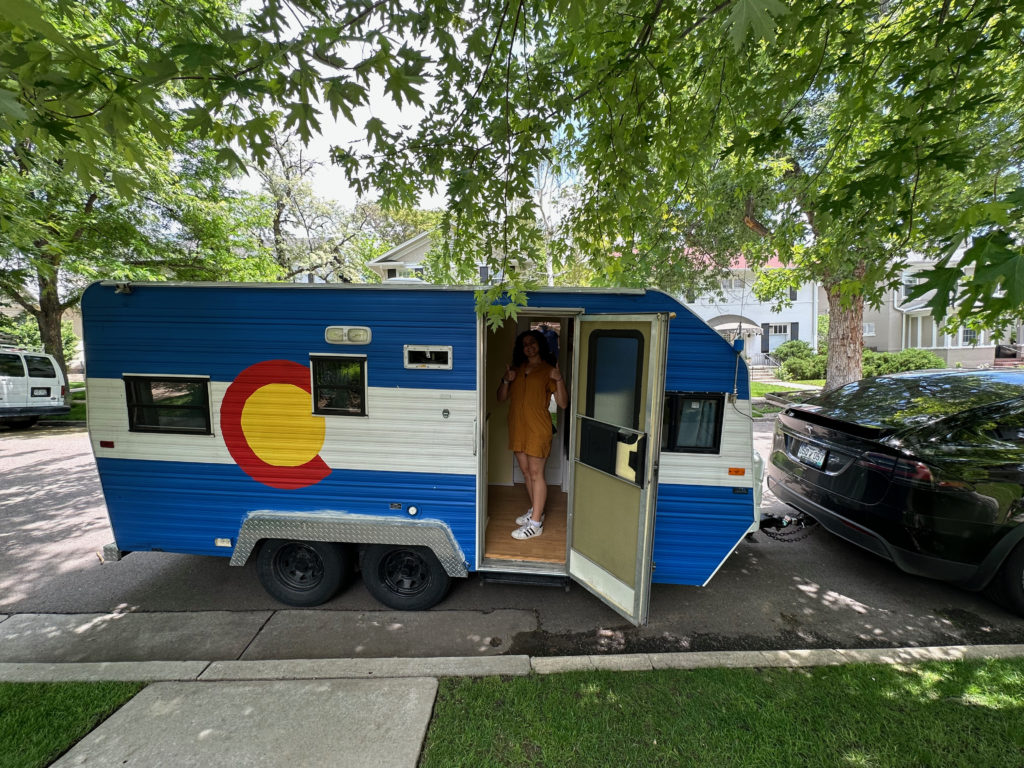
The second challenge was finding a vehicle. RV envy is real, especially when you have friends who’ve done it just right. I considered renting a big motorhome to recreate my childhood experience, but maybe (I wondered) the reason I have no recollection of actually seeing sights from those trips is because we couldn’t actually park that beast anywhere desirable? With some previous experience visiting national parks and kooky Americana I knew that vehicle flexibility was key. So we settled on a trailer-towing arrangement so that we can unhitch and tool around as needed. But what to tow?
It’s good to have outdoorsy friends, especially close friends you’ve known since rooming together in college. And this is how I have come into the temporary possession of the glorious Colorado flag-themed (handpainted!) 1993 Sunline camper trailer above. There are no bells and whistles on this thing whatsoever and it is kinda falling apart, but it works and tows like a dream. Much more on our home-away-from-home in posts as we hit the road.
OK so, how to tow? I have been driving an electric vehicle for several years and have come to love the national Tesla charging network (though not so much the company’s leader). So why not make this odyssey needlessly (more) complex and attempt to haul a two-ton trailer on electrons alone? I did a few test runs and the range impact is basically exactly what you’d expect from an internal combustion engine: 43.3 % average reduction in range, 55.6 % average reduction in efficiency. Conservatively that means 175 miles of range per full charge. The colored polygons on the map above show roughly how far we can go from major destinations on a charge. (The tribulations of charging with a trailer, especially in the EV infrastructure wasteland of Wyoming and Montana, will get its own post.)
I’ll post as regularly as I can once we depart with some special features including what it is like to outfit this quasi-futurist jalopy with a CB radio. Everything will be cataloged at http://ampcamper.com with updates at Instagram and Bluesky.
If anyone reading this lives around the route or has recommendations what to see, hit us up!
Here’s a full map and itinerary spreadsheet.
10 days and counting …
Ghost Ecosystems and Terrible Lizards
I teach a course at CU Denver on urban technologies where, to the bewilderment of most students, we begin by studying a decrepit urban typology somewhat unique to the American West: ghost towns. Where students are expecting robot cars and sparkling sci-fi skylines they get depopulated ruins and crumbling foundations. It takes several sessions before students appreciate why we start this way. The afterlife of towns and cities exposes quite a bit about why they were created, what assumptions they were built upon, and what larger systems they are enmeshed in. If these towns are ghosts, how exactly did they die?

Apart from their educational value, ghost towns in the western US are uniquely fun to explore, little open-air museums of urban decay which defy assimilation into newer development as happens in the east. And it’s not just towns: ghost infrastructure is everywhere, like the time-smoothed scar tissue of historic Route 66 reminding how we stitched together the country west of Chicago in the early 20th century.
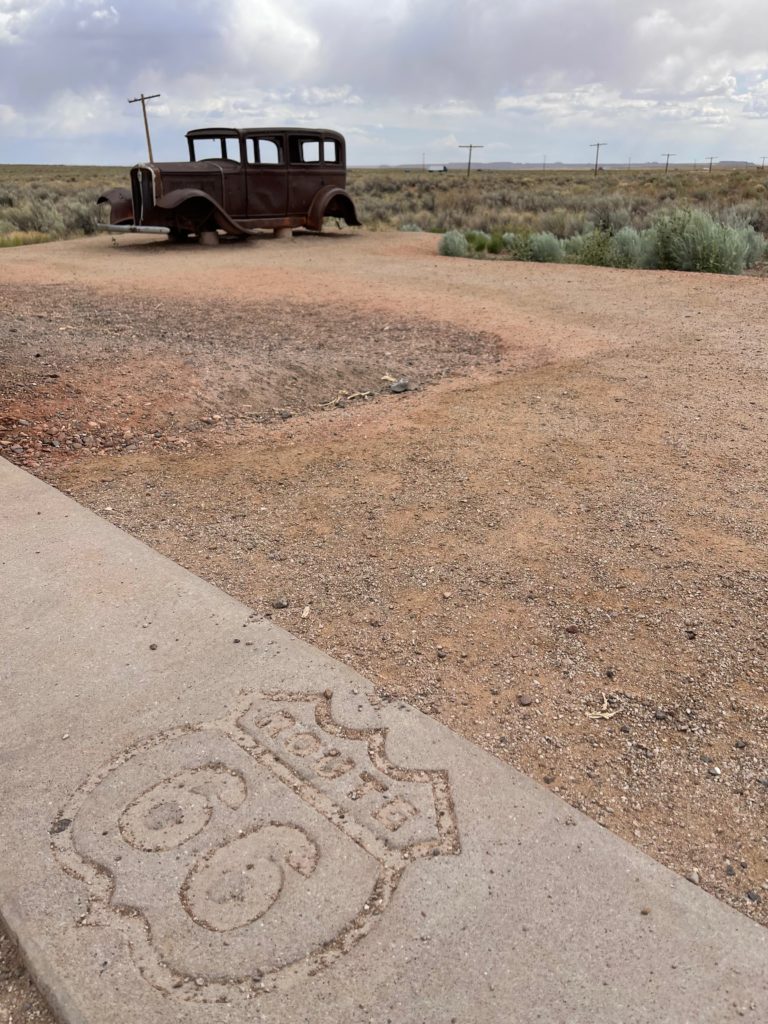
More personally, as a relative newcomer to Colorado from the midwest I’ve come to love ghost towns simply for the excuse they provide to explore the region I now call home. Placemaking by way of un-places.
So it seems somewhat obvious in hindsight that I’d inevitably be drawn to dinosaurs, an even more complex and further bygone ecosystem whose presence in the American West is as iconic as tumbleweeds and spurs. Dinosaurs may seem like quite a conceptual leap from ghost towns. But both are sometimes barely visible threads woven into the fabric of our landscapes here, simultaneously a record of engagement with, modification of, and sometimes defeat by the environment itself. This interplay between environment and the creatures that lived in it — indeed were ultimately ended by it — I think accounts for its hold on me, someone with zero paleontology or geology (and very little biology) background. How could an ecosystem as complex as that of the Age of Reptiles, lasting hundreds of millions of years through several extinction events, simply end? Indeed, did it really end? (Hello, birds!) Like ghost towns, the dinosaurs that once prowled (and flew and swam) here have been remade into a kind of modern brand. From gas station logos to baseball team mascots to entire town identities these “terrible lizards” seem endlessly repurposeable.
My first descent into this mild mania actually began not in Colorado but where it all ended off the coast of the Yucatán peninsula.
Vacationing there last year naturally I had to educate myself on the cataclysm of the bolide impact 66 million years ago which brought an end to (almost) all dinosaurs. Once I felt I knew enough I then put together a small lecture, to the chagrin of my family and friends who just wanted beachside rest and relaxation. But that impact! Obviously everything in our locale was obliterated, instantly pulverized, but it was the thought of what the world became in the years and decades after the fiery hellstorm that really got me thinking. A world choked by carbon and airborne particulates, sunless, scorched from heat coming in from the sun but having no way to radiate back out.
How a geologist named Walter Alvarez enlisted his physicist father Luis to figure out just why the boundary in rock sediment separating the Cretaceous period (lots of dinosaur fossils) from the Paleogene period (nary a dinosaur fossil) has levels of the element Iridium 100 times higher than naturally occuring is a story worth reading. Ultimately this layer, called the K-T or K-Pg boundary, and which can be found nearly everywhere on our planet, is the blanket of asteroid material that fell back to Earth after its immolation off the Yucatán — a burial shroud placed gently (and permanently) in the geologic record eulogizing almost 75% of all species at the time.
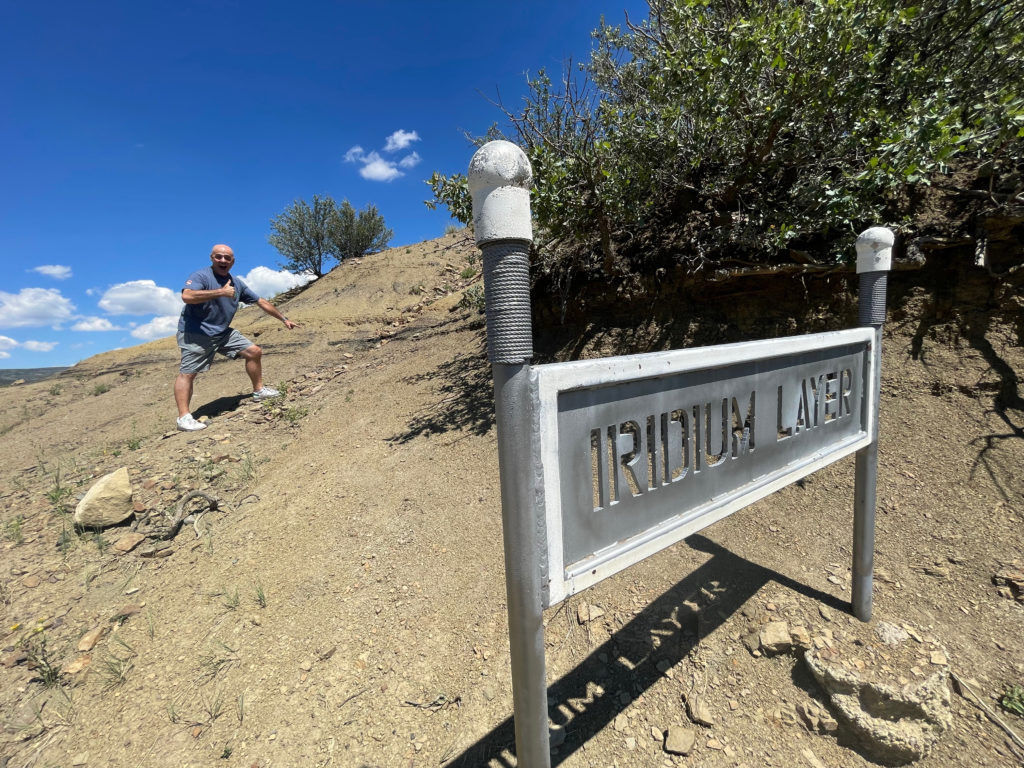
This was all good fun … until I decided to make a solo mountain bike day trip to Picket Wire Canyonlands in southwest Colorado last year. The trek about killed me — hot, dry, arduous biking on sandy trails. Also I didn’t bring enough water. On the other hand, I had the entire 16.7 trail route to myself, seeing not another soul the whole day. This solitary experience became all the more magical when I arrived at my destination, the largest dinosaur tracksite in North America. 150 million years ago plant-chomping Apatosaurus and flesh-ripping Allosaurus squished their feet into the soft lakeshore here which silted over and hardened into over 1,300 tracks in at least 100 separate paths criss-crossing every which way. I dismounted my bike right in the middle of it all, sat on the sun-baked rock, reveled in a total lack of cell signal, and tried to imagine what the place would have looked like — sounded like, smelled like! — as the herds slopped through.

And then I was hooked. How could I not learn more at this point? I had placed my foot inside the footprint of another living creature from the Jurassic period out on a bike ride just a few hours from my home.
Sure, Sue the T-Rex was found in South Dakota. Montana has the infamous Hell Creek Formation. Utah gave us the raptor that successfully retconned Spielberg’s originally ludicrous depiction of Velociraptors in Jurassic Park. Even Kansas can flaunt its one-time Western Interior Seaway and basically all the great marine reptile and pterosaur specimens.
But Colorado is the state that I think most fulsomely embraces its dinosaur history. Here are some highlights.
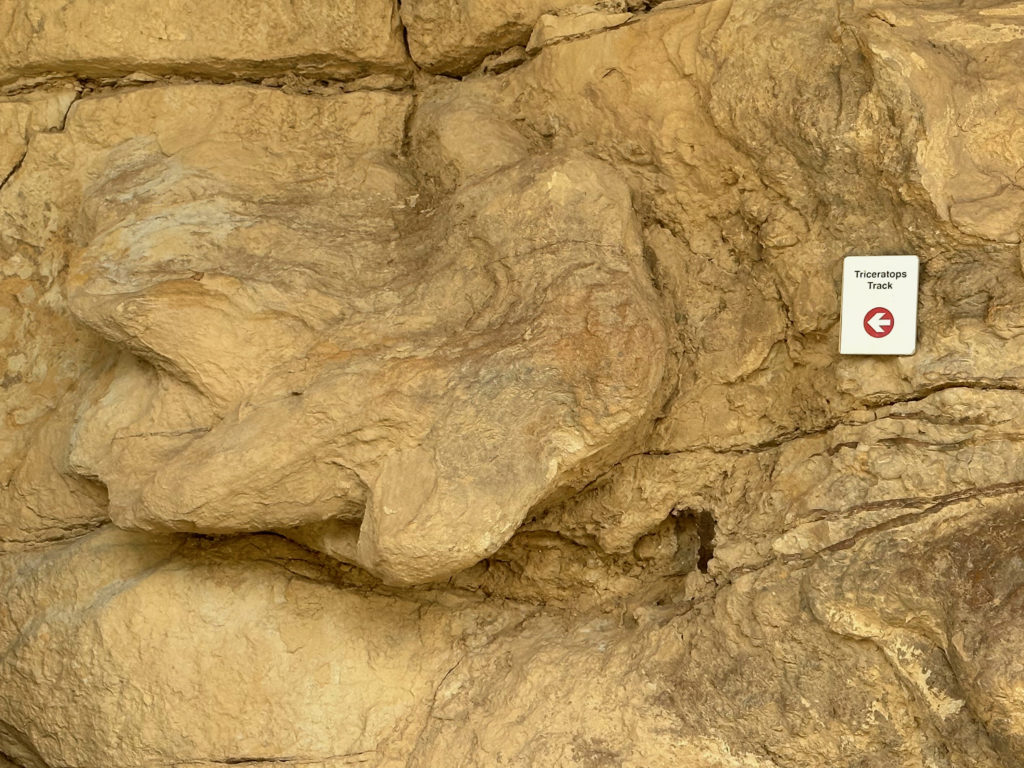
The Triceratops Trail (officially the Parfet Prehistoric Preserve) on the edge of Golden offers an easy walk through former clay mining trenches that have exposed all kinds of interesting dinosaur tracks. Triceratops is confirmed with possible Tyrannosaurus and Edmontosaurus. Easily as interesting are trace fossils of birds, small mammals, beetles, palm fronds, and even (arguably) raindrops. The site abuts an active golf course. It’s a bit jarring to see humans frolicking around the perfectly engineered invasive species of putting green grass, then turning around to face a 100+ million year old wall of dinosaur tracks. I wonder which will outlast the other?
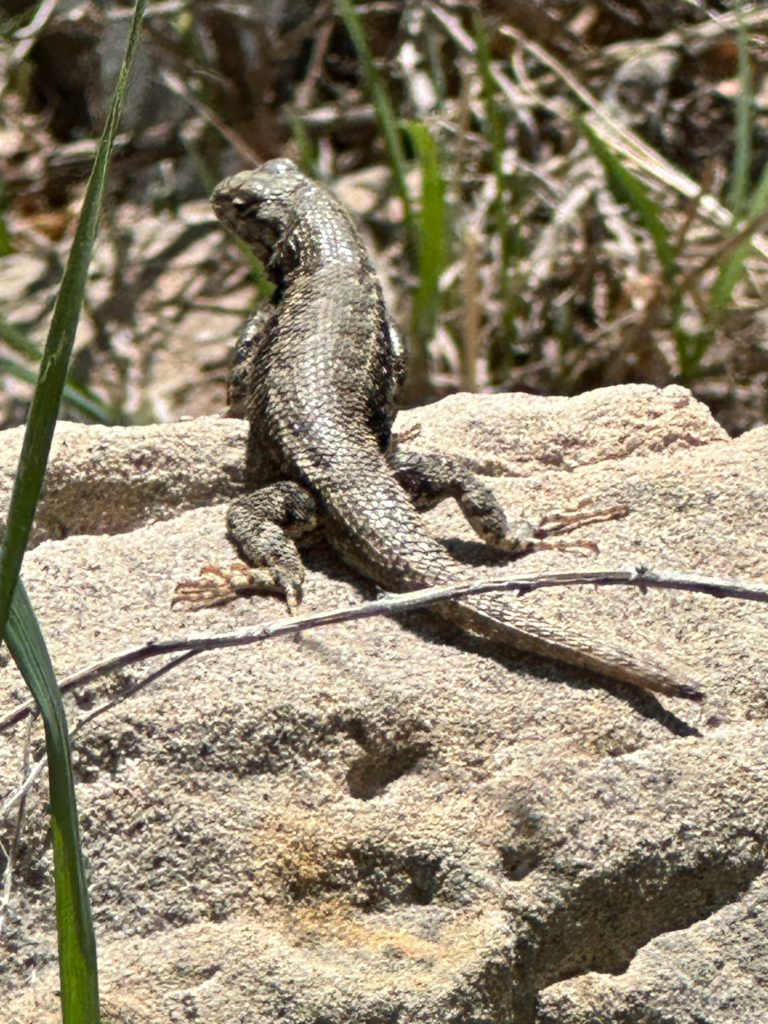
A lizard basks on the Triceratops Trail separated from its clade-mates by a mere 231 million years (evolutionarily). 19th century depictions of dinosaurs took a lot of inspiration from their lizard cousins. We know now that there was very little tail-dragging and tongue-flicking. Our modern dinosaurs are birds and once you note that you can’t unsee it.

In a stroke of geological luck in the Late Cretaceous what was once flat beachfront wetland was jacked up at an angle by two tectonic plates sliding under one another called the Laramide Orogeny. This angling gives us some of the most stunning formations in the foothills (think Red Rocks Amphitheatre) but also provides a kind of outdoor exhibit space perfect for humans strolling by to view all its embedded fossils. One of the best hikes around if you’re into ichnology (the study of the fossilized tracks, trails, burrows and excavations made by animals).

It takes a trained eye (which I do not have) to spot some of these tracks. Points to the curators of Dinosaur Ridge for making the good stuff obvious. Here’s a rare Velociraptor track. That hoop is maybe 4″ in diameter, a reminder that true Velociraptors were the size of turkeys (and feathered like them too). Definitely wouldn’t want to tangle with one, but also not the big scaly door handle-operating baddies from the movies.
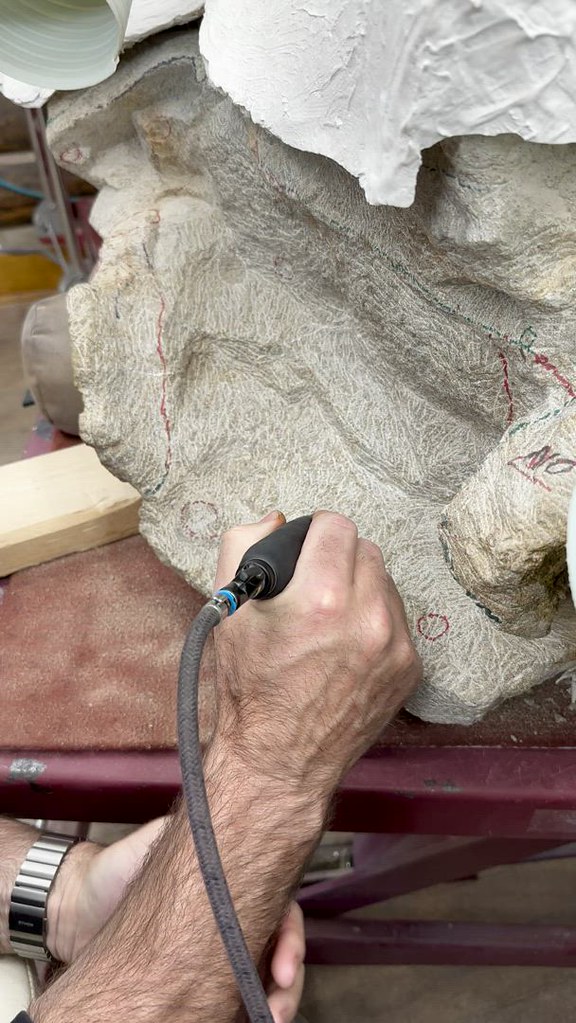
The Morrison Natural History Museum located near Dinosaur Ridge is a standout. Intimate, chocked with great local fossils and full of helpful one-on-one guides (all of whom are city employees — go off, Morrison!), it is exactly what a museum should be. Being mostly the display and preparation facility for fossils discovered over at Dinosaur Ridge, you get to see the real thing. Not many casts here. Highlights include the story of the discovery of the first Stegosaurus nearby, infant dinosaur tracks surrounded by giant sauropod imprints (how did they not get trampled?), an outdoor dig pit, and pointers to plant survivors of the K-Pg extinction. As you can see from the above video, part of the exhibit space allows you to sit down and try your hand at removing rock matrix from an Apatosaurus skull with a dental drill. If you’ve got good eyesight, a steady hand, and an infinite amount of patience, perhaps fossil preparator is the job for you?

In far northwest Colorado straddling the Utah border is Dinosaur National Monument. I visited in the winter so it was just me and the ranger and several thousand jumbled dinosaur bones. The highlight is certainly the “Wall of Bones” which the park has left in situ and built a lovely enclosure around called the Quarry Exhibit Hall. Like Dinosaur Ridge, it’s tilted at a perfect viewing angle thanks to tectonic subduction. All these bones in one place it is pretty confidently theorized come from an ancient stream that just washed them all into one place. Checking off another box on the things-that-appeal-to-John list is that Dinosaur National Monument is an official International Dark Sky site. There’s no artificial light anywhere. Fossils by day, stargazing by night. I must return. (Zoom into the shirt to see the best gift I have ever been given.)
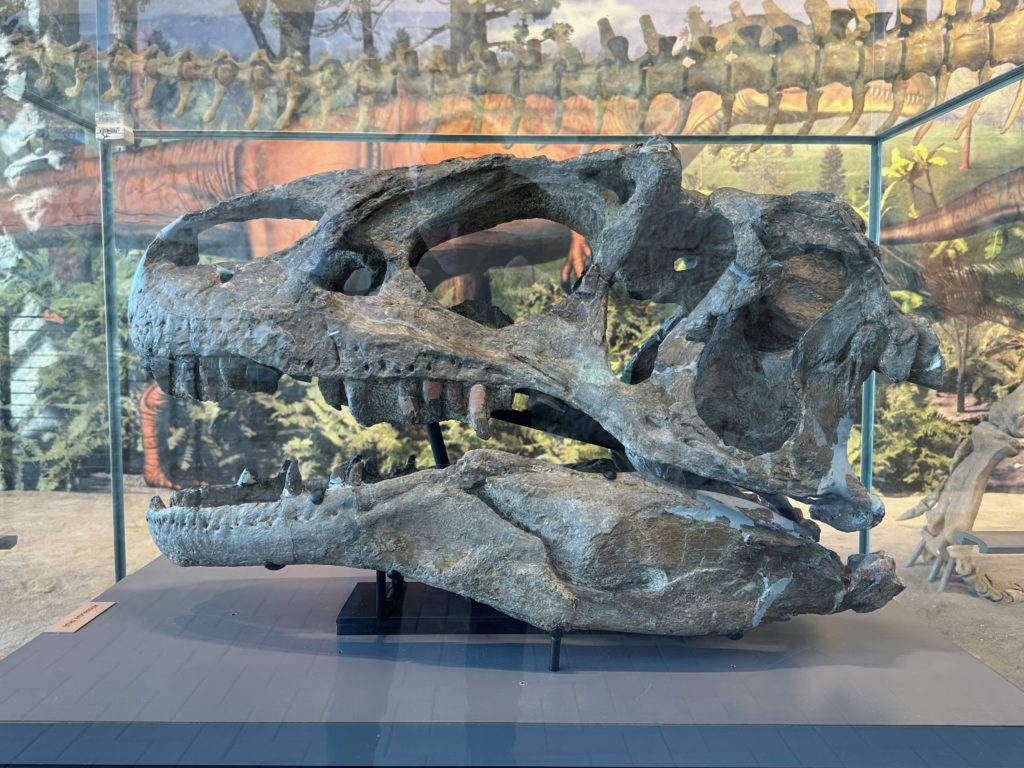
T-Rex gets all the love, but the earlier Allosaurus was every bit the terrifying carnivore, if slightly smaller. Check out the horns on its brow where evolution apparently decided “death machine but more demonic”.
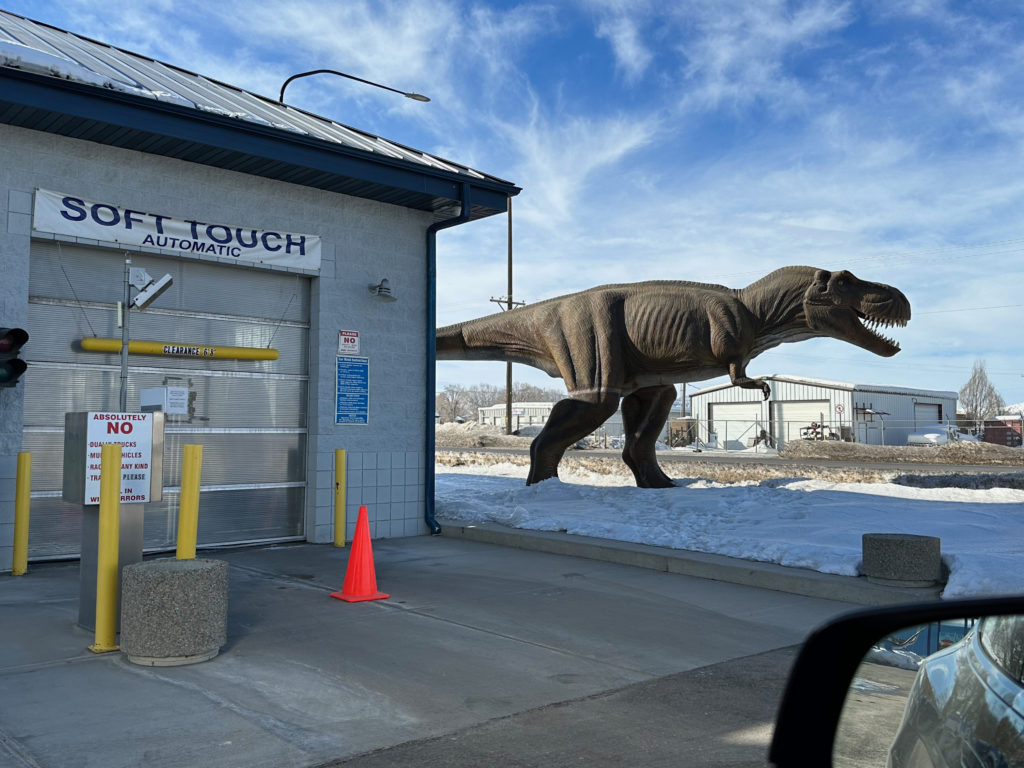
The Colorado town nearest the national monument and formerly known as Baxter Springs renamed itself Dinosaur in the 1960s and they have not looked back. Pictured is a tyrannosaur wanting nothing to do with the soft touch of a carwash. (The town’s counterpart on the Utah side, Vernal, arguably takes its terrible lizards even more — or less? — seriously. Every other business is festooned with some form of fiberglass saurian.)
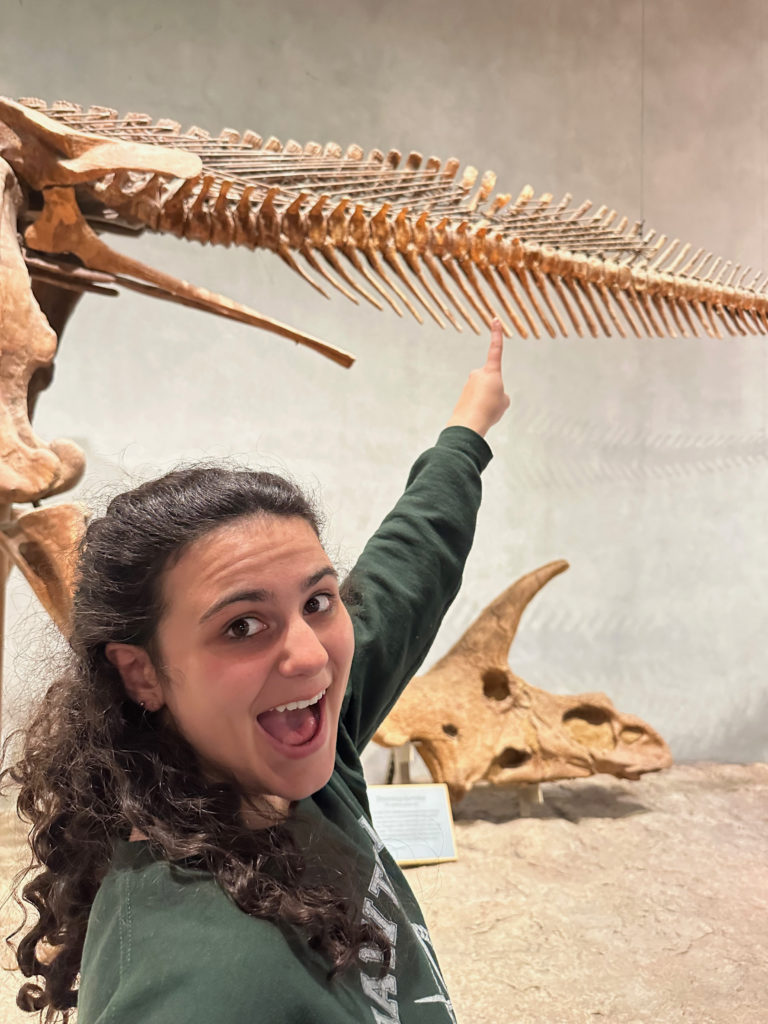
See that missing tip of the Diplodocus vertebra she’s pointing to? Paleontologists agree that’s what happens when a giant theropod chooses you for a meal. This attack would have taken out a sizable piece of tail meat (and of course part of a bone), but clearly the Diplodocus lived another day. That is, until it was entombed in the mineral-rich sediment that allowed it to fossilize and be presented at the Denver Museum of Nature and Science. Bad day for ol’ Diplo, good for us.
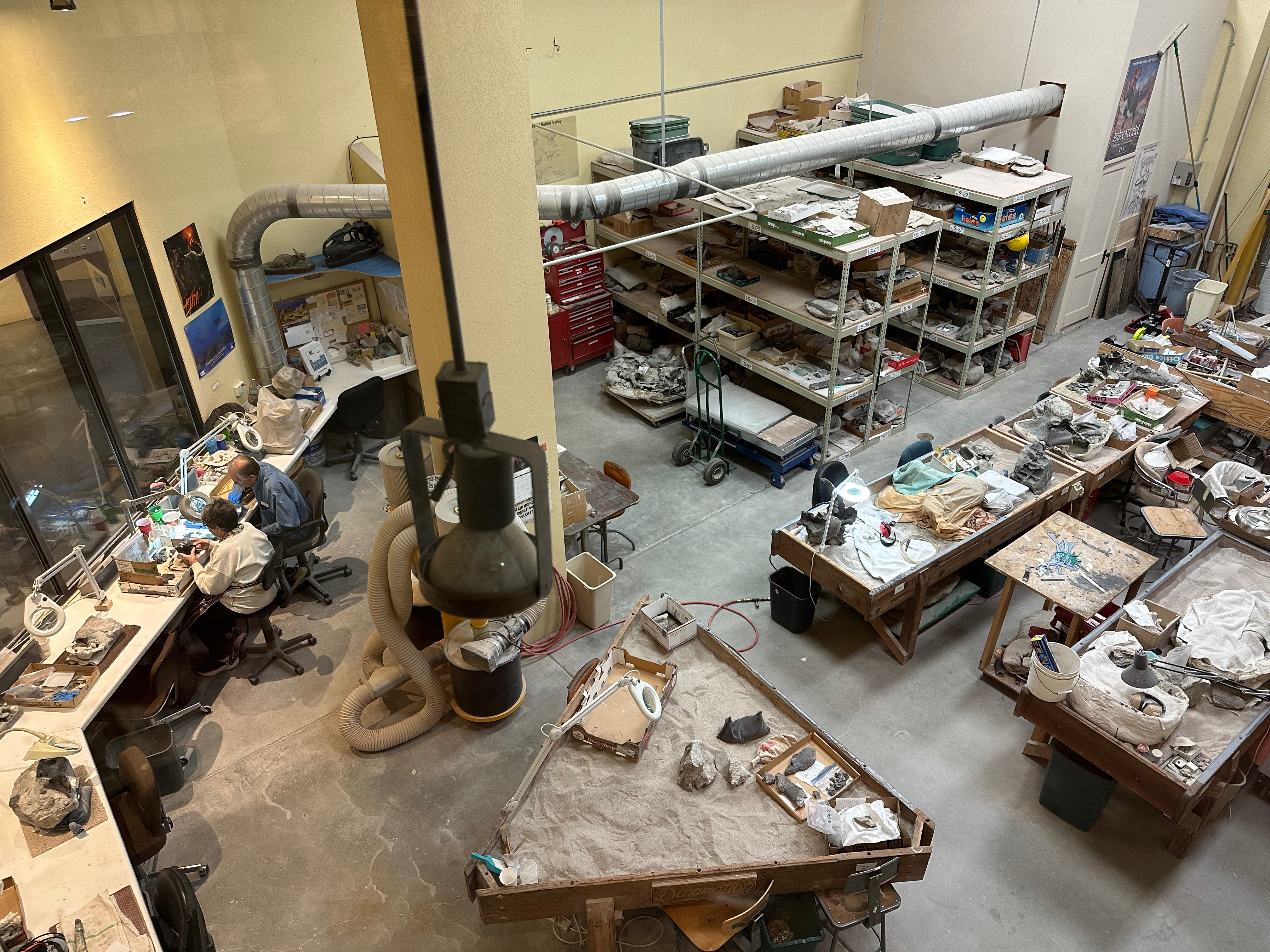
Over Grand Junction way the Dinosaur Journey Museum has some striking specimens including a sauropod femur with deep claw marks, properly feathered dinosaur models (which, maybe it was the animatronics, audio, and lighting, but to me floofy dinos are somehow even more chilling than lizardy dinos), and the skull starring in your next nightmare from Diabloceratops. Step back, Allosaurus. Your horns ain’t nothin’. Their working paleo lab, pictured above, was the largest I have seen so far.
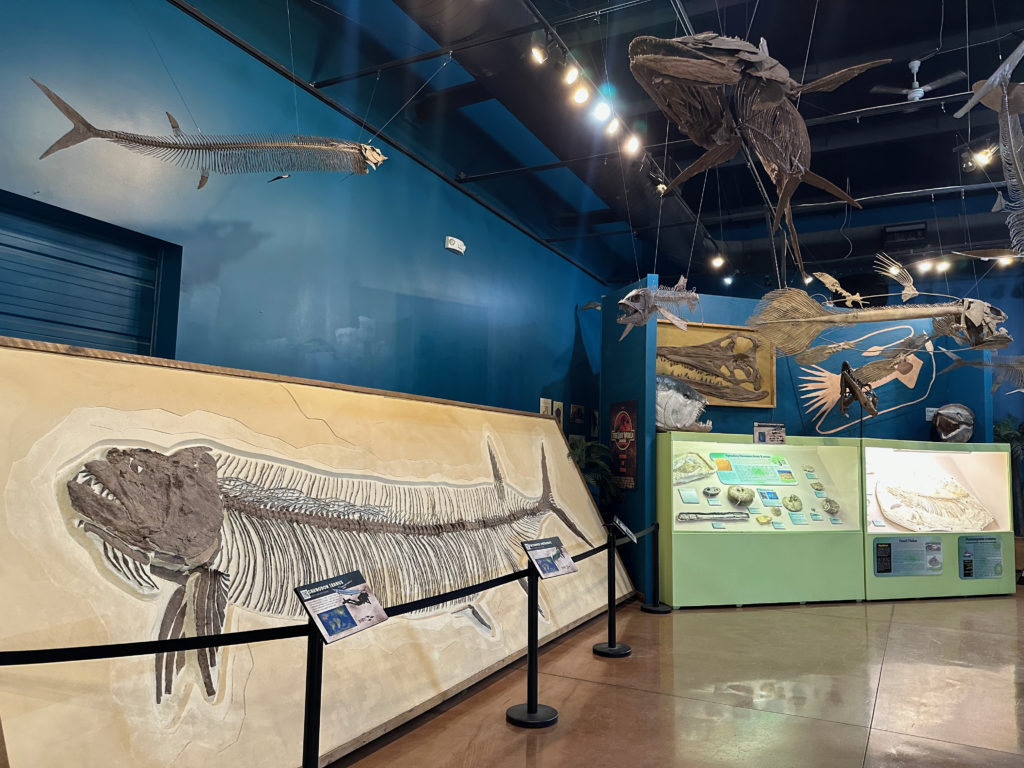
So that Western Interior Seaway whose west coast provided such good fossil-making sediment on its shores also delivers up some incredible marine reptiles and pterosaurs, which, while neither are dinosaurs taxonomically, are related contemporaries and just as fascinating. Most of what’s on display at the Dinosaur Resource Center — located a short way into the mountains up from Colorado Springs — was unearthed by the for-profit Triebold Paleontology company who runs the center, a unique business model to say the least.
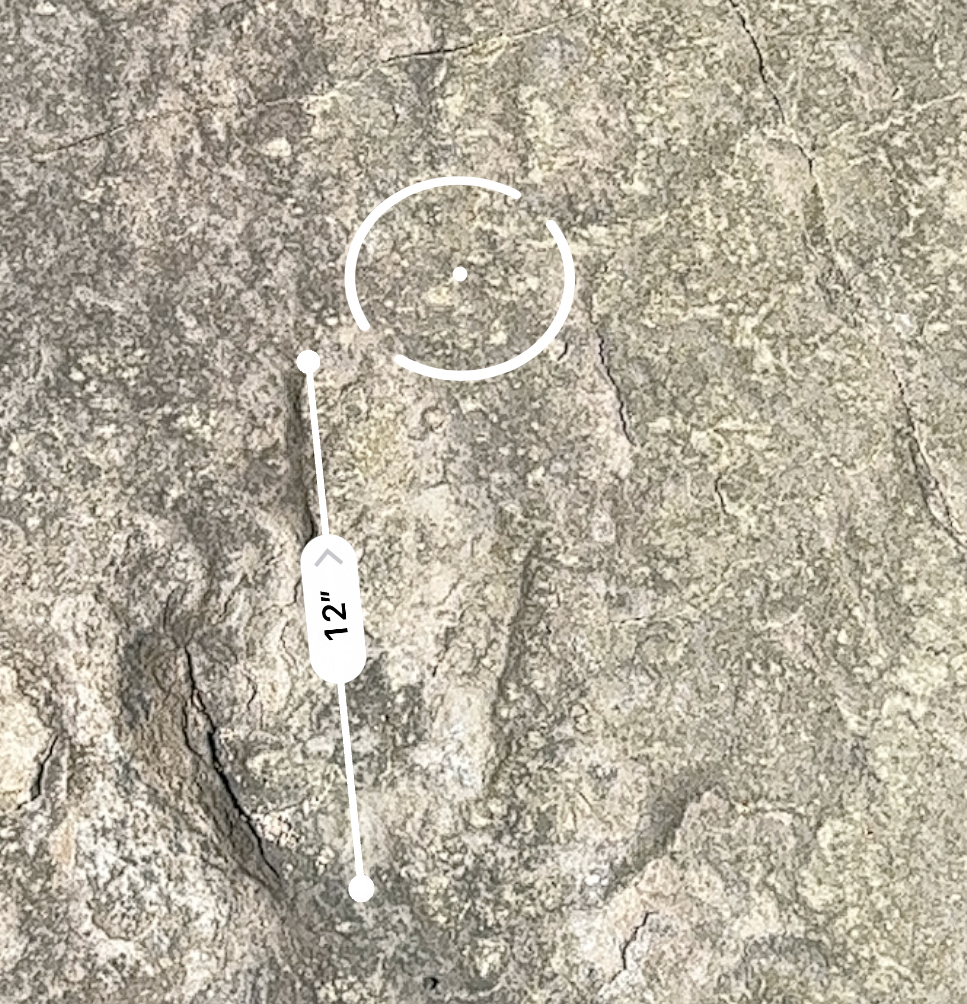
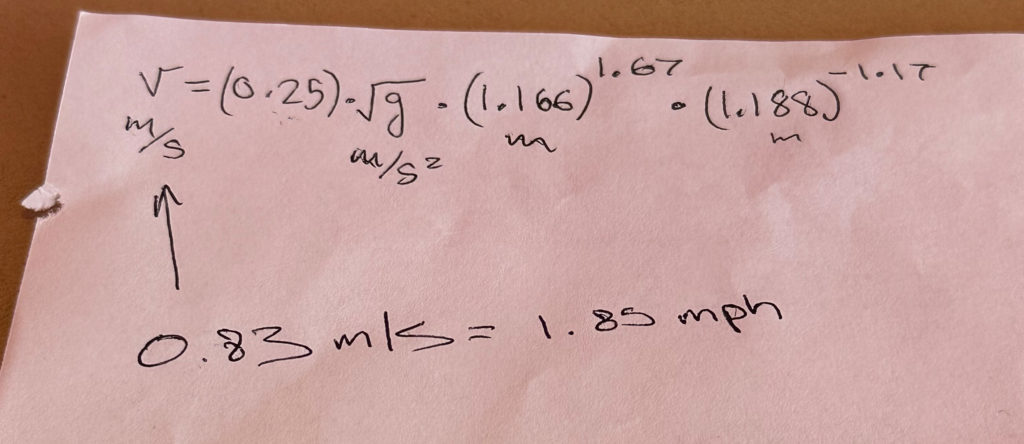
All of this is just dilettante paleontology of course. I don’t even know that I qualify as an enthusiast. Admirer, maybe? Paleontology is so radically cross-disciplinary there are entry points from dozens of domains: geology, biology, botany, the visual arts, math, data science, etc. As an example, my son, a physics nerd, was intrigued by our ability to measure footprint size and stride length to accurately calculate pace — a glimpse into not what the dinosaur was but what it was doing. And that’s just extraordinary.
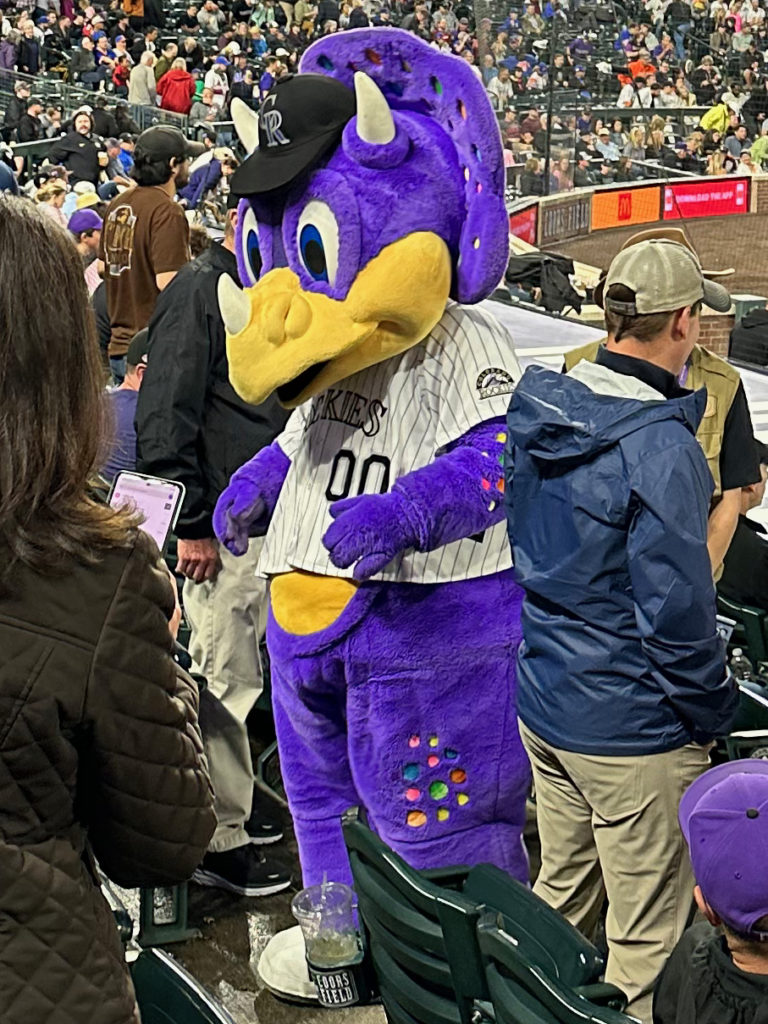
It’s not all about the science, of course. The idea for Dinger, the mascot of the Colorado Rockies baseball team, hatched during the construction of Coors Field when some dinosaur bone fragments were unearthed. It’s impossible to know if those fossil bits came from a Triceratops, though scientists are fairly certain they come from an herbivore (which the ceratopsians were). Somehow Dinger is bipedal, but we’ll let that slide as he’s one of only two (non-avian) dinosaur mascots in all of professional sports.

I’ve found dinosauriana in the strangest places. An otherwise-average Best Western in a Denver suburb with legit fossil casts, vintage paleontology gear, and weekly lectures? Sure why not. How can you not love its murals depicting the feud between 19th century paleontologists Edward Cope and Othniel Marsh of “bone wars” fame? These fellows would actually sabotage each others’ digs they hated each other so much. Immortalized now on the side of mid-tier hotel chain. Nice work, gents.

It’s all gone now, of course. The actual dinosaurs, that is. Paleontology itself is having a bit of a golden age, if the pace of scientific discovery is any measure. But the mindboggling diversity and longevity of these vertebrate marvels ended 66 million years ago. Yes, with a bang, but also likely with a whimper. One ongoing area of scientific research and debate is just how long it took everything to die after that very bad day off the Yucatán. While there are no dinosaur fossils found above the Iridium Layer, the millimeters of strata that make up its layers are measured in millions of years. It’s possible dinosaurs survived for a while after the impact, but what’s nearly certain is that it was radical changes in climate that ultimately ended their particular ecological niche. (Indeed climate change is the culprit in all our planet’s mass extinctions, including the worst one of all which gave rise to the world the dinosaurs inherited.) Today paleontology is not just digging up scary beast bones or fodder for big screen thrills. It’s proof that our global ecosystem is a fragile one, an eschatology written in mineralized organic remains. Towns become ghosts; seemingly invincible living systems become ghosts. Paleontology isn’t about the past, ultimately; it’s a prediction.
If you’d like to delve further I recommend the Apple TV+ documentary series Prehistoric Planet (two seasons so far), the Terrible Lizards podcast, and a few good books.
Holiday Frights 2022
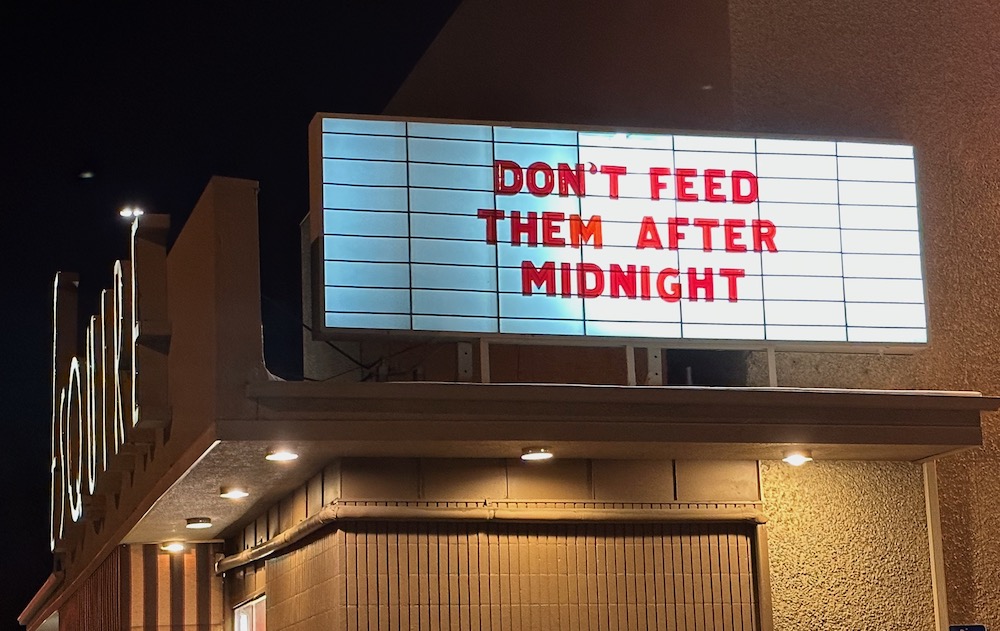
(Of note, I consider Gremlins a Christmas horror movie, fight me.)
Welcome to another annual edition of recommendations for your spooky Christmas needs. (Click here to skip right to the reviews.)
Last year I mentioned the few contemporary remnants of the Victorian-era love of wintertime ghosts, but the linkage between short, dark days and the urge for flesh-tingling storytelling goes back a lot further than that. Shakespeare in A Winter’s Tale (1611) notes “A sad tale’s best for winter. I have one. Of sprites and goblins.” Yule logs, mistletoe, the Christmas tree itself — all pre-Christian celebrations of the winter solstice, symbols of a time for gathering in a space where you could only see to the limit of a fire’s flame. And what to do around this fire, huddled close? Tale-telling, naturally. Those tales, as the setting rather begs, historically have been about ghosts and other haunts. This tradition wound its way into Christianity and the modern era, as Colin Fleming notes as a series of
… readings for the season—but not really of the season … a rather more pleasing terror—the ghosts, even when they mean to avenge themselves upon us, also seem to have dipped into the nog a time or two, with their own playfulness in evidence. Sure, they can kill you, but they do so with a joke or two at the ready. These are the short days of the year, and a weird admixture of pagan habits and grand religiosity obtains. There is also booze. People didn’t have TVs: people drank, people got to telling tales, someone told a tale and someone tried to tell a bigger one, and then, lo, we got a whole ghost story Christmas tradition.
Holiday ghosts were fading away by the early 19th century until Charles Dickens famously brought them back as time-traveling tour guides in a grand morality tale. A Christmas Carol is the last major vestige — a tomb marker, if you will — of a tradition that was far weirder and scarier than any of Dickens’ four ghosts. And yet, A Christmas Carol is part of the cultural atmosphere of Christmas, there even when it isn’t in the foreground: scrooge-as-a-verb, being shown how behavior can spawn multiple timelines, the inspiration for the Grinch, and countless adaptations (including this year’s Spirited with Ryan Reynolds and Will Ferrell — worth a watch). It’s embedded in our childhood psyche in a way unlike any Halloween ghost story.
Here’s my personal proof. Christmas Day, 1982. My siblings and cousins retreat to the basement to create our own adaptation of Dickens’ classic. It was the dawn of VHS cameras, the noonday of wood-paneled suburban decor, and the dusk of my short career as a playwright. This grainy, budget-less masterwork, a Christmas gift to you, will likely be the most disturbing thing you watch as a result of this newsletter.
You may think that Halloween has the monopoly on horror media, but it isn’t even close (at least in the USA). There are hundreds, possibly thousands, of Christmas-themed horror movies from barely watchable home movies (ahem) to legit masterpieces — the true legacy of those bards of yore and their campfire frights. Let me tell you about some.
An update on the Marhaver Lab campaign

I turned 50 last month. It’s a funny age. Old for sure, but not ancient; closer to the end than the beginning, statistically. Maybe because of that memento mori I seemed naturally to be thinking less about the present and more about the future — a future far enough out that does not include me. And that got dark real quick given the state of our planet. In an effort to keep it light I wanted to do something that focused on the long term, something (however tiny) that contributed to the foundations of a healthy planet.
Enter Dr. Kristen Marhaver. I first met Kristen years ago after an Ignite talk she gave at the ORD Camp unconference. The whole talk was jawdroppingly insightful (and funny), but I remember one moment especially. She was describing the process of coral sexual reproduction, a not well-understood event that happens at night, whereby coral simultaneously release sperm and eggs into the water. These particles are positively buoyant so they all come to the surface. Kristen continued that the evolutionary brilliance of this is that the buoyancy effect turns a geometrically complex insemination problem in three dimensions (everything just willy-nilly colliding in the open water column) into a much more manageable two dimensional problem at the water’s surface. But here’s the real beauty: fertilized eggs then become negatively buoyant ensuring that they fall back to the substrate to try to grow and thrive. You go, evolution!
So, yeah, I’ve been interested in the science of coral reefs for a while. Following Kristen’s work, scuba diving reefs all over the world, and running my own little experiments at home — not exactly a side gig, but certainly a passionate avocation. Running a small fundraising campaign for Marhaver Lab to celebrate my 50th birthday seemed a natural thing to do.
I had no target in mind when we launched the project. Indeed, if anything I thought worst case a low raise would quantify just how few friends I had left after a pandemic. But, in a little over a week we raised just shy of $11,000 — far more than I could have hoped for. Family and friends donated (thank you!), but what really became interesting is how the campaign evolved in a few days to receiving support from people neither I nor Kristen even knew. The word got out, apparently, and people love baby corals.
I think no one loves baby corals more than Kristen, though. If you’re interested in the work she does, there’s a just-published piece on a “moonshot” project she was part of to cross-breed Elkhorn coral (Acropora palmata) from Curaçao with the same species (exhibiting different environmental characteristics) from Florida. This is important as we look for ways to introduce heat-tolerance and other forms of climate resiliency into reefs worldwide. It’s called “assisted gene flow”. Basically Kristen’s a midwife of the coolest sort. And yet, as this excerpt notes, there’s still work to be done:
Marhaver thought that they had a five to 10 percent chance of success. To have hundreds of healthy coral now sitting in tanks barely crossed her mind. Conservationists are more attuned to the vibrations of endangerment, extinction, and loss. To have a moonshot succeed is unfamiliar territory. With the impossible now possible, the next hurdle is moving from the lab to the ocean, a leap that not everyone is comfortable with.
$11k isn’t a lot of money given how much it costs to perform the kind of lab-based and in situ work that Marhaver Lab undertakes. But it’s a start and more than that it’s a signal that a lot of people care about the complex interdependence of our planet’s health with even the smallest living creatures. I may not be ancient (yet) but coral organisms are and their well-being is inextricable from the well-being of our global marine environments. If the oceans fail, we fail. Venus is too hot. Mars is too dry. We have to make this third rock work.
One day at a time
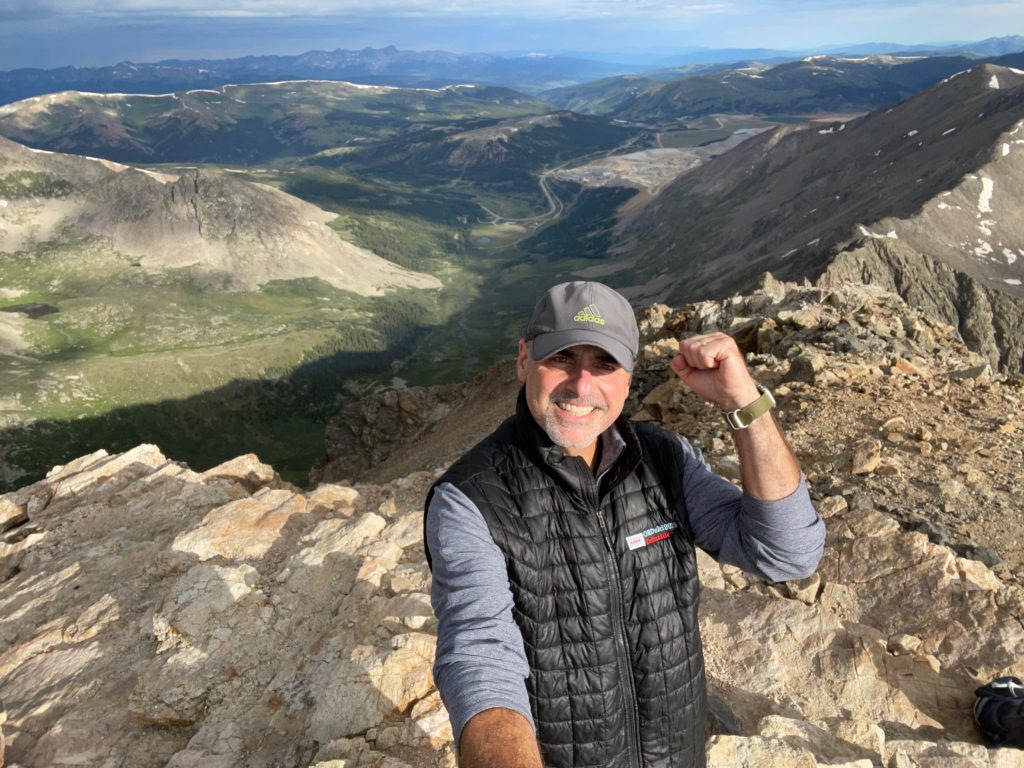
Friends! I turn 50 years old on August 4. I’ll pause for old person jokes, but please speak up.
50 is an arbitrary milestone, sure, but I got myself a pretty great gift and I’d like to tell you about it. August 4 will mark 1,000 days since I gave up alcohol. It’s been the best thousand days of my life overlaid right on some of the worst thousand days we’ve had as a human species (battling a virus species). That this sobriety milestone happens on my 50th birthday is a coincidence. But maybe there’s no such thing as a coincidence?
The story of my road to sobriety is a long one, one I am happy to share at length with anyone — especially those whose relationship with alcohol is unhealthy. Here’s the short version: I accepted that I had a problem with alcohol — let’s call it what it is without stigma: alcoholism — just after Halloween 2019. Halloween is my favorite holiday of the year and also my son’s birthday. So, naturally, a terrible time to crater. But crater I did, which was exactly what I needed. Went away for help for quite a while … and then the pandemic happened and I came home to a new life. The world was in lockdown, but I felt fully unlocked. It was especially eye-opening time, those early days of sobriety, when the world itself was coming to terms with the lessons of recovery: re-connecting with simple life-affirming things, not projecting too far into an unknowable future, living one day at a time and chalking those single days as victories. It was as if all of society for a brief period was supporting my own early, delicate recovery.
It’s no longer early; it’ll always be delicate I suspect. So’s life. But each day is a great day and that feels better than any buzz ever did. Not gonna name names, but I have received a lot of help and love from family, friends, and then-strangers in this journey. You know who you are and you know how much I appreciate you.
To alcohol I say, no hard feelings. We just didn’t work out, you and I, when I realized I didn’t love you. Totally cool with your relationship with others. Best of luck!
So, yeah, one day at a time adds up. Sometimes it adds up to 50 years (thanks Mom and Dad!); sometimes it adds up to 1,000 days of clean living. I intend to keep adding.
Why am I telling you this before my actual birthday? Because I got myself another gift: this fundraiser for a cause very close to my heart. 🪸
The Marhaver Lab — run by marine biologist, science communicator, Georgia Tech grad, and friend Kristen Marhaver — is a research outpost based in Curaçao in the southern Caribbean. The work of Marhaver Lab is aimed squarely at helping solve the problem of declining biodiversity of the world’s coral reefs. This is critical work: coral reefs are foundational elements of our oceans’ larger ecology. When reefs thrive, fish populations thrive. When fish populations thrive, the planet (and humanity!) thrives.
I don’t think anyone gives gifts for a person turning 50, but if you’re so inclined your support of Marhaver Lab would mean a lot to me. More information and tax-deductible donations accepted here.
Thanks for reading! Hope you can donate. On to the next day, with gratitude!
Gravid With Decay, love letters to a genre

Hello friends! Last year when the lockdown started, I watched a lot of movies. Most of these were what’s considered horror or closely adjacent to it. I wrote about almost everything I watched (and why I think it was as much an immune response to the pandemic as antibodies).
That long post, though, was the summation of months’ worth of biweekly emails sent among friends just sharing recommendations and thoughts on movies we were watching. I loved writing those and was kinda sad when we wound it all down.
Welp, we’re not out of the pandemic and I’m not done sharing short thoughts on horror via email. Like any good monster, the reviews are back, undead. Also like any good monster, you never quite know when it will appear (OK, fine: never more than weekly). Sign up at Buttondown or below. (Need a preview?)
Cityfi: yeah, it’s a verb
Cityfi? Like Wi-Fi? Or like … unify? Is it a thing or an action? I’m here to tell you it’s a verb. Everything about the work Cityfi does is about motion, progress, and change. So here’s a little update on my movement, as I take leave from this small but mighty company.
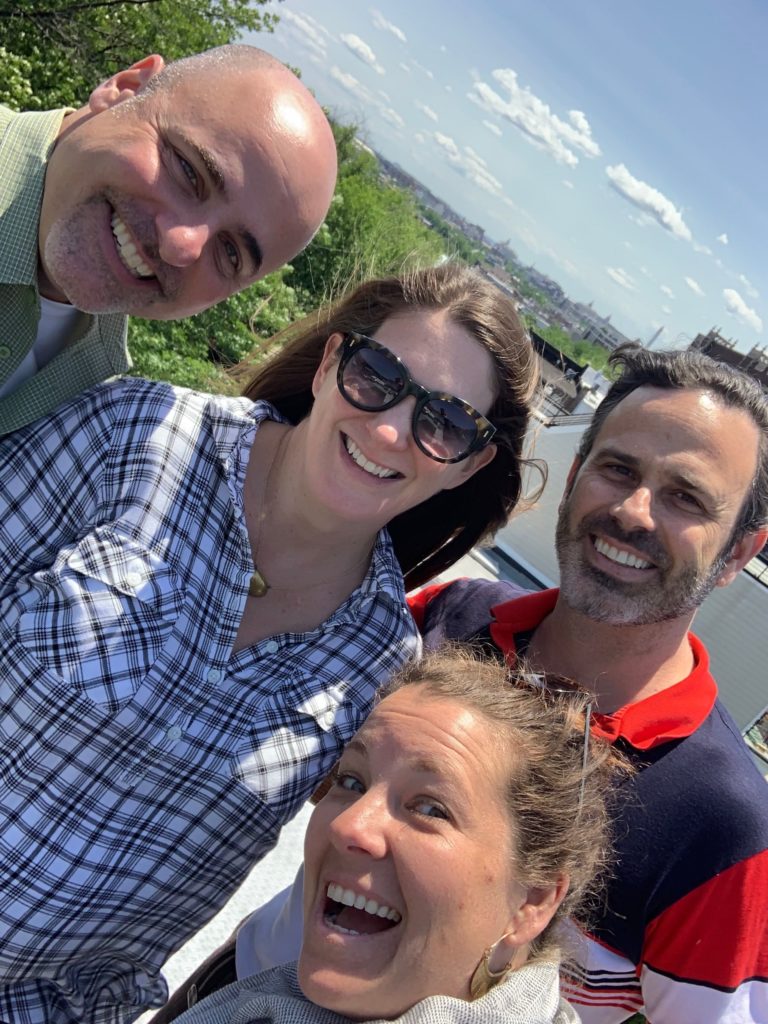
July 2016, Before Times: my family and I had just arrived in Denver after a cross-country relocation. It was a fresh start geographically but also professionally. With my friend and former colleague at the City of Chicago, Gabe Klein, we started a new company with the amazing Ashley Hand. It was the birth of the urban change management consultancy Cityfi.
Our hunch that both the public and private sectors could use guidance navigating the rapidly-evolving realms of urban mobility, data analytics and privacy, equitable services, and climate change resiliency (to name just a few) was proven correct. We were off to the races and working with great clients all across the country and globe.
Cityfi is stronger than ever now, coming up on five years in. With the addition of partner Story Bellows and some amazing senior staff, we’ve created a first rate team, a portfolio of work, and most importantly a reputation for responsive, thorough consultancy that seems to be needed more than ever.
There’s never a great time to move on from something you love. (I know this; I left Chicago … just as the Cubs were about to win the World Series.) But now’s my time to step forward from Cityfi.
Obviously this has been a past year of change and uncertainty, but for me the relative slowdown of life — limited physical interaction and travel, whittled-down life patterns — has brought what I think is clarity of purpose, or at least time to listen with less background noise. The signal coming through isn’t completely decoded, but I’ll let you know what it says when it is.
For now, I have a class to teach and a brand new smart cities certificate to help manage at the University of Colorado Denver (as, ahem, a scholar in residence). I remain involved locally as the board chair of the Colorado Smart Cities Alliance (an early Cityfi initiative and one of which I am most proud).
While that pride exists for a lot of what we built at Cityfi and I’m confident that its future is bright, the main emotion I feel is gratitude. I am not sure I could have made the transition to a new life in Colorado without the support of my partners. For that I am immensely grateful.
Lastly, deep thanks to the clients, associates, and affiliates who made these past years of work engaging and meaningful. Thank you all for treating Cityfi as a verb. Here’s to your continued movement — healthy, happy, and ever-forward.
Coral brickscape
I’m a coral nerd and an unrepentant adult fan of LEGO bricks, so I figured why not attempt a completely instruction-free build of a squishy, curvaceous reef out of hard plastic 90° angles.
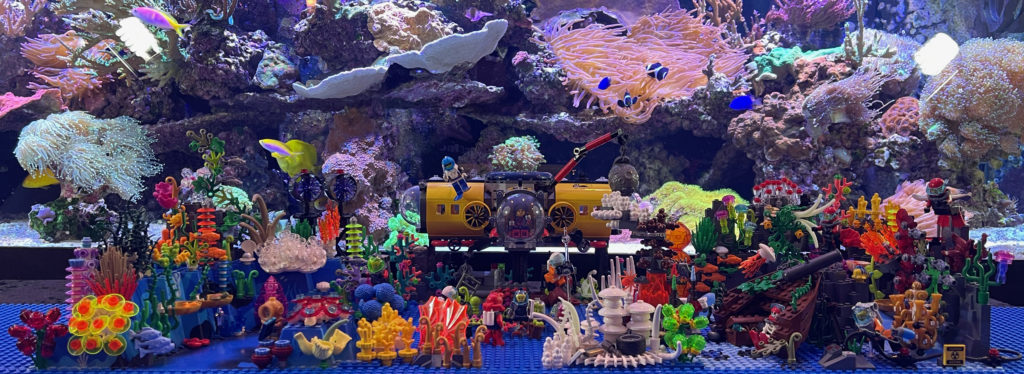
Certainly I get the irony of making a model of corals from non-biodegradable plastics, but maybe that’s the point (and part of the point of keeping a huge tank of actual corals): the need to create a microcosm of something that’s rapidly disappearing seems more urgent, even if it’s only a creative pastime.
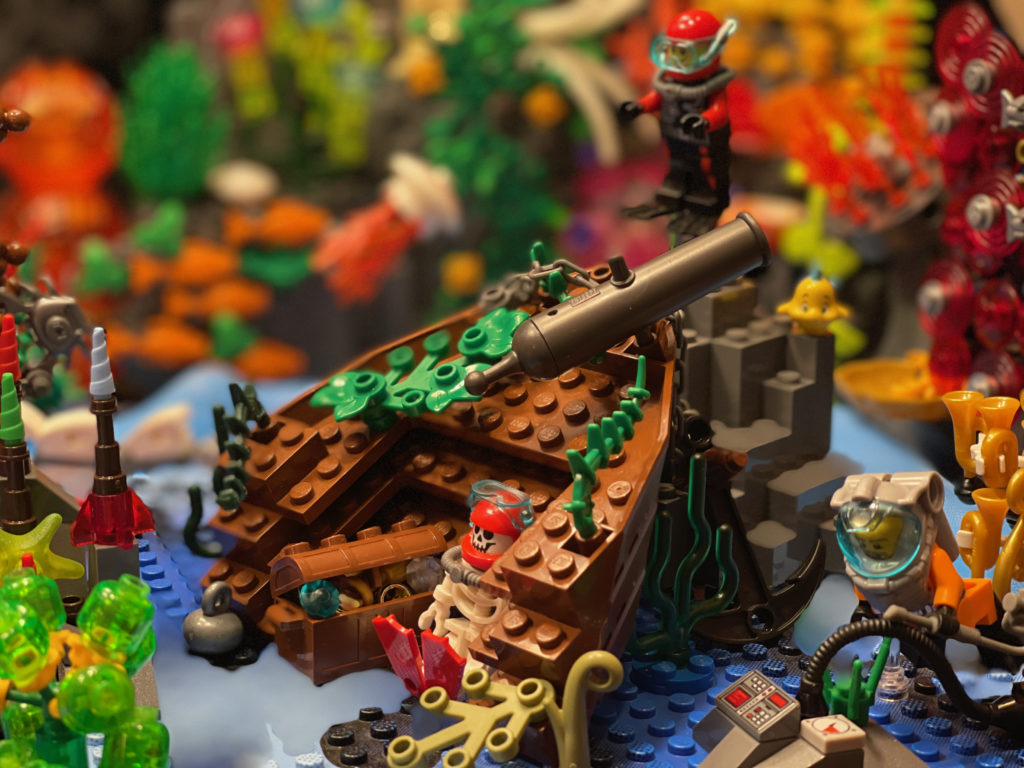
And what a pastime it was. Early on in my musings of how to do this I realized there was no way I could find the bricks I thought I needed just sorting through the 100,000+ loose bricks in the dozens of tubs and bags they were randomly collected in. This launched an effort at organization and general de-crufting that deferred the actual reef project for months.
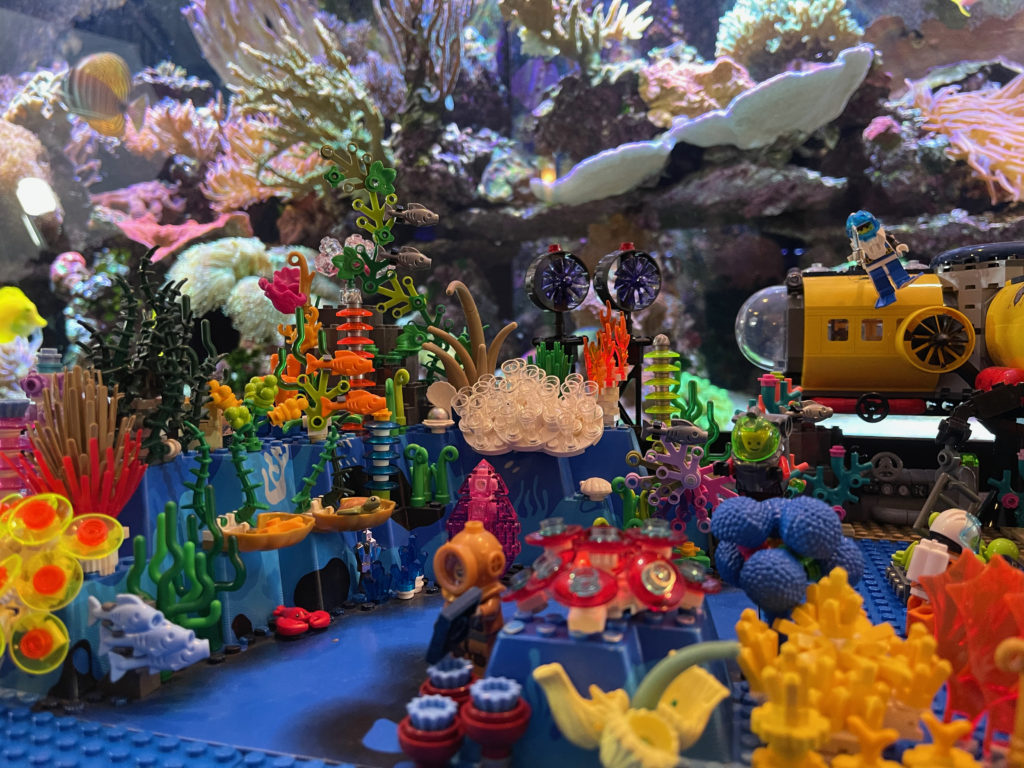
The sorting itself was, in a way, part of the design process. Touching every single brick we own (in every possible orientation, decontextualized from its originally-intended purpose) gave me a millisecond per brick to consider how it might be used to simulate the crazy shapes that reefs take.
And that was the real challenge; there’s nothing rectilinear about coral. If it isn’t a swaying mass of tentacles, polyps, and pulsing mouths it’s a bleached Iron Throne of jagged, fractal CaCO3. I took a lot of inspiration from techniques for making botanical models (plants, flowers, etc) but also from the advanced facade decorations included in LEGO modular architecture sets. Basically, I catalogued as many of the ways of getting bricks to assume odd or semi-random angles while still being affixed to one another. Didn’t hurt that I could just stare at my own tank of beasties for inspiration when I got stuck.
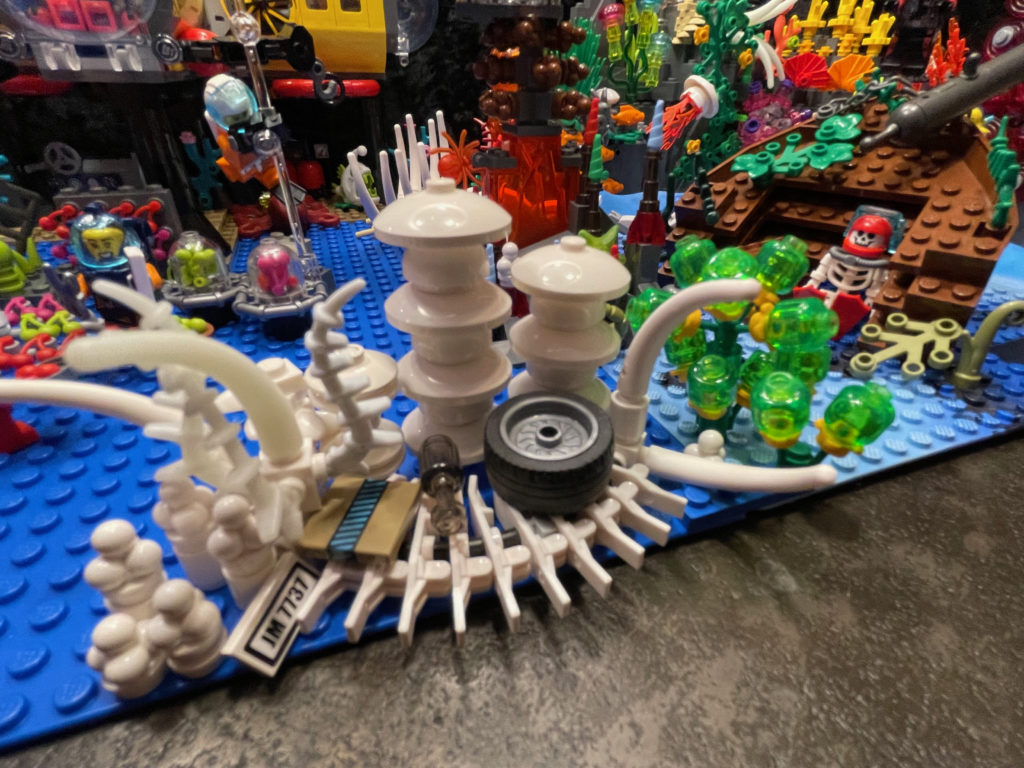
There is an actual LEGO coral brick, but I ended up not using it much as it’s really a distillation of what we generically think coral looks like. In the end it was far more fun to repurpose minifig hairpieces, radar dishes, trumpets, chalices, carrots and ice cream scoops. Mounting all that was mostly an exercise in SNOT (“studs not on top”) design, using nearly every brick made specifically for that purpose and a ton of techniques culled from the LEGO nerdweb.
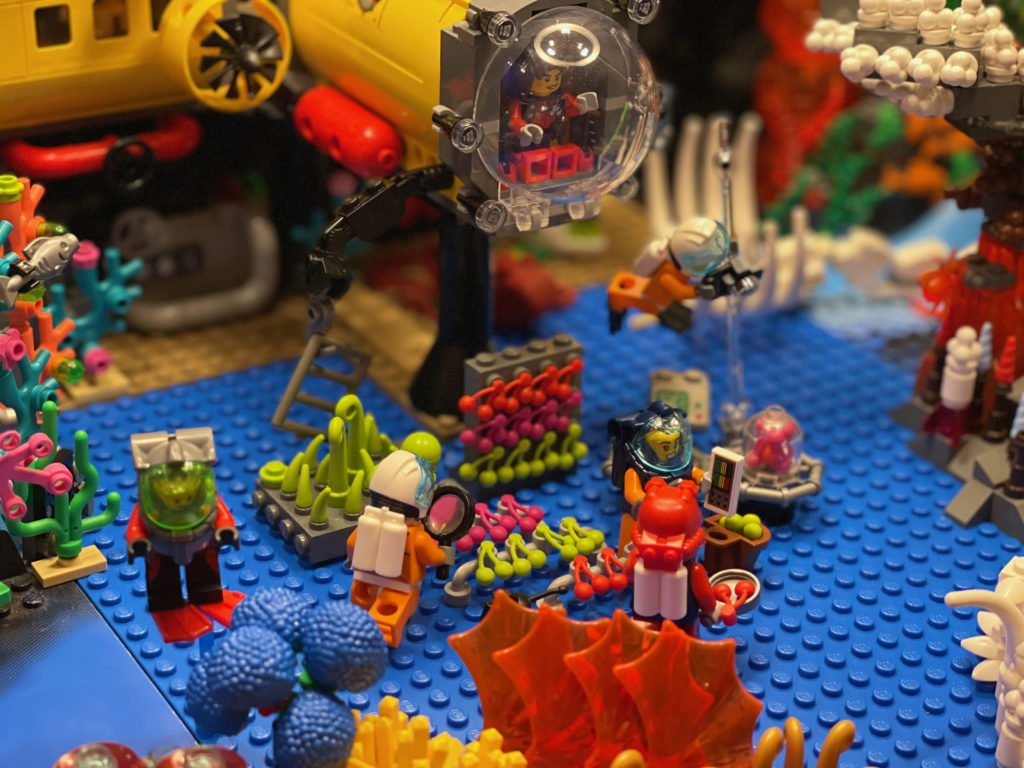
There’s a lot going on in this ecosystem. The main subdivisions left-to-right are a vibrant reef section, the marine science and bleached reef middle section, and the “all the things on the seafloor” section which includes a shipwreck, hydrothermal vent, and whale fall. Other items include a transoceanic fiber cable (with repair technician attempting to bring broadband to your continent), wreckage from Oceanic Flight 815, Aquaman fighting Black Manta, a couple shy mermaids, the Antikythera Mechanism, a diver as skeletonized as the whale, human trash in the bleached patch (including an actual broken piece of ABS LEGO plastic), and a steampunk Diver Dan. See if you can find them all. (Here’s the full set of photos at Flickr.)
It’s all now mounted on a lower shelf in my home library, part of a larger cityscape and sea. The ocean surface needs a lot of work, but for now I’m going to turn to the relative comfort and trance-like ease of building a set with actual instructions. Freeform and organic is a lot of work, you know?



